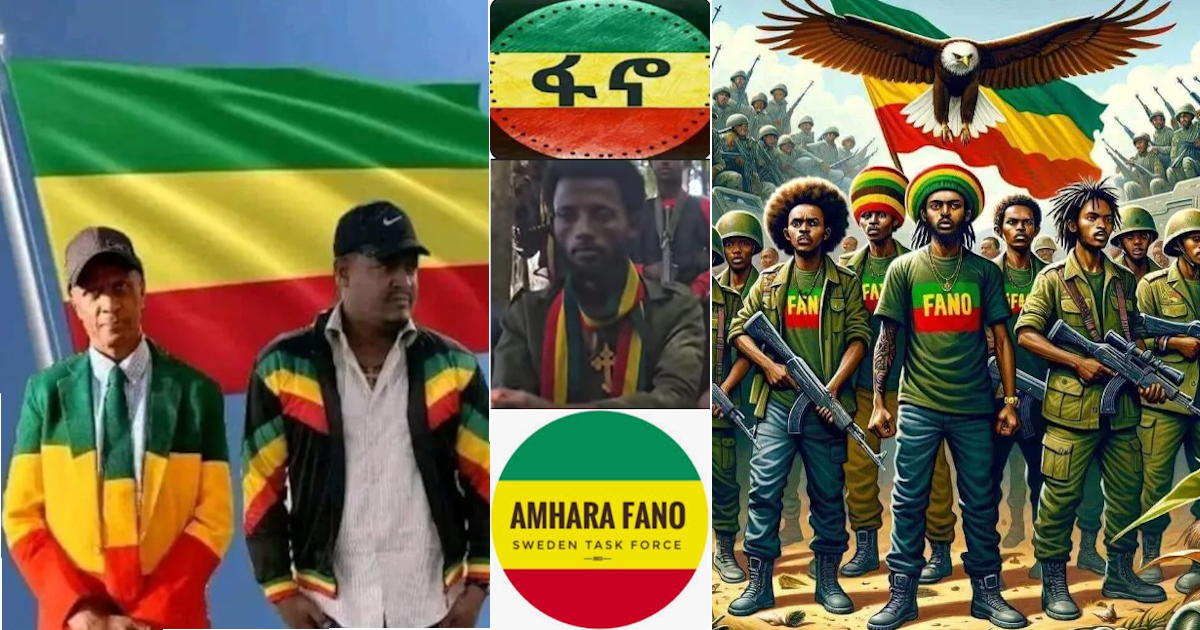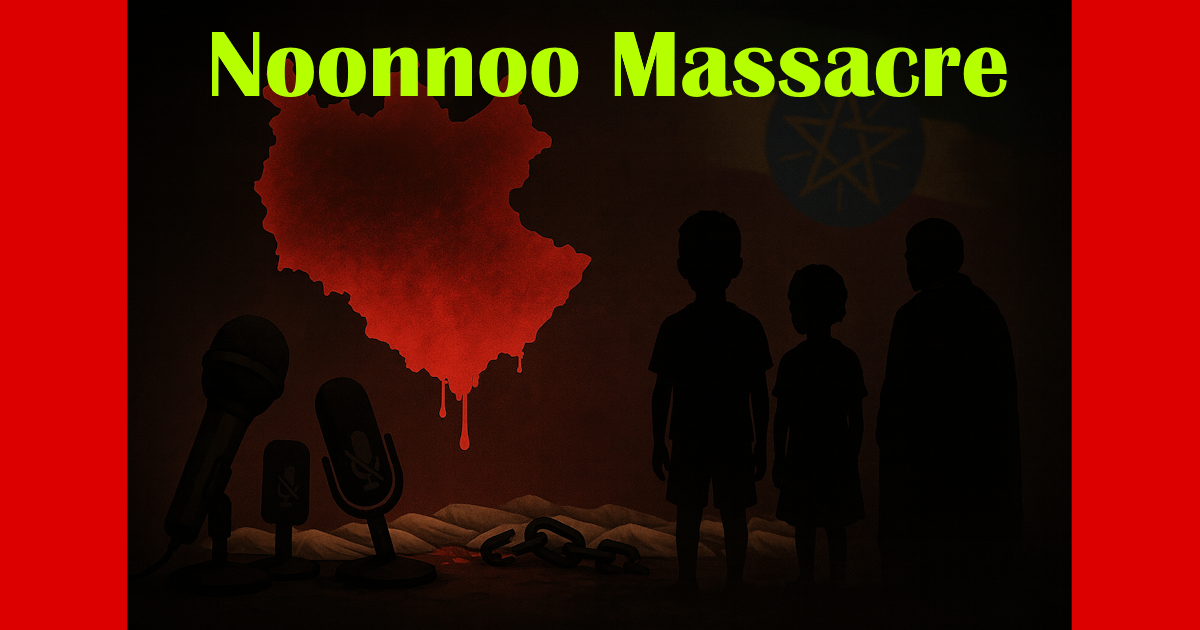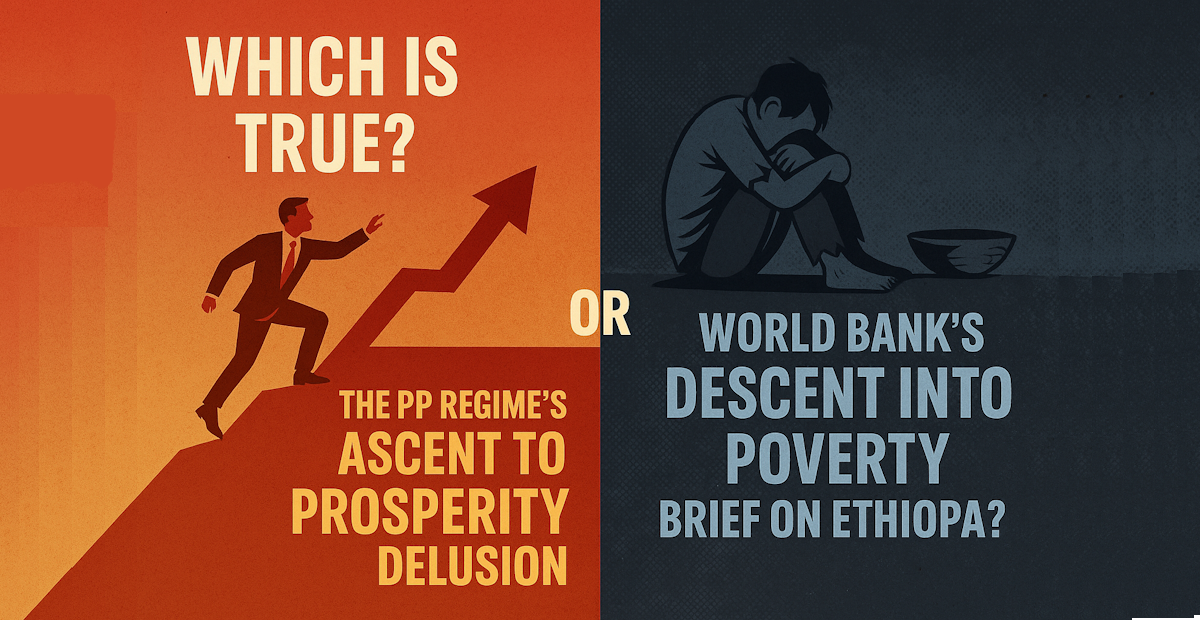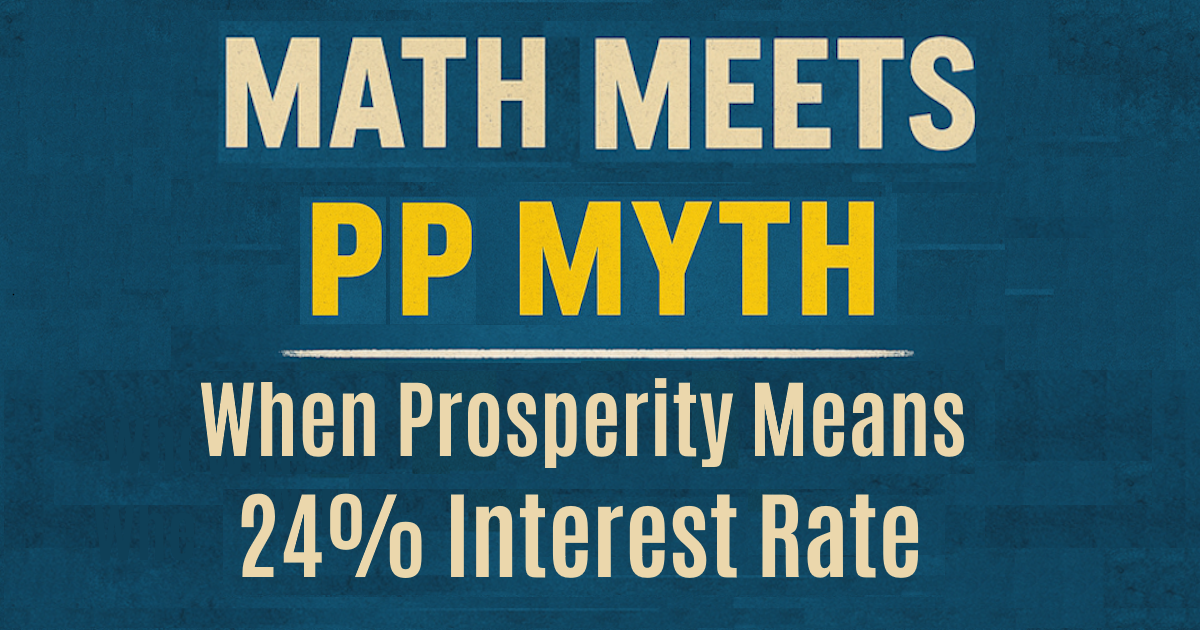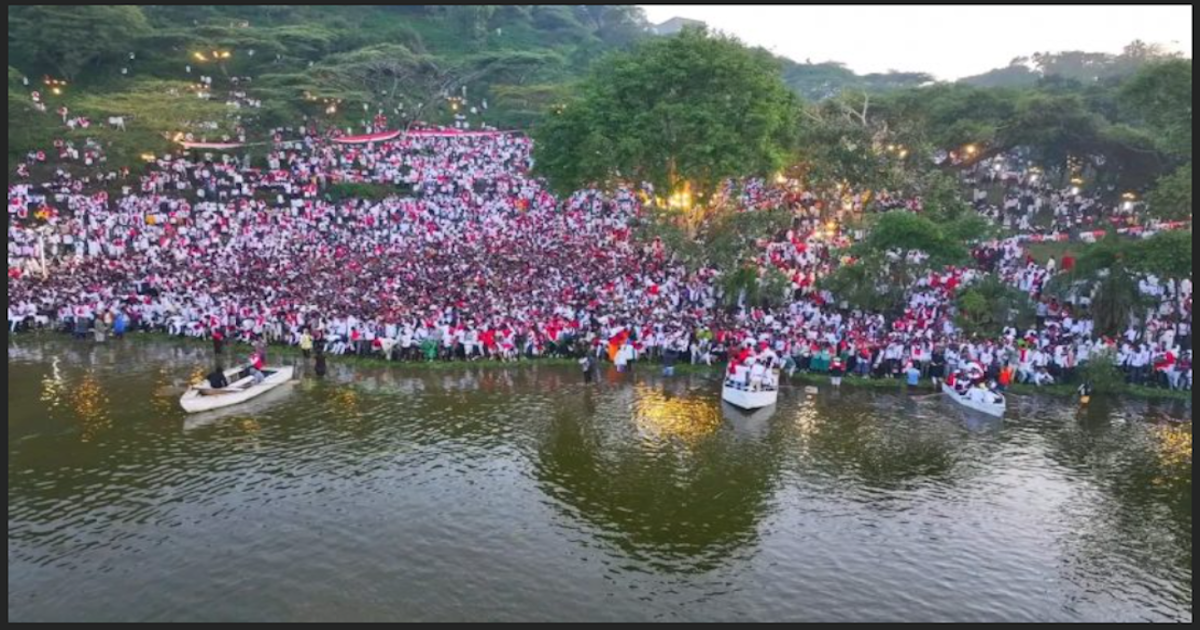The Final Goal of Fano Led-Amhara Elites and the Resistances They May Face
Introduction
The ultimate objective of the Amhara political elite appears to be the restoration of a centralized, unitary Ethiopian state, effectively dismantling the current multinational federal arrangement and overturning the existing constitution. However, this vision is neither straightforward nor uncontested.
Contrary to this centralist ambition, the diverse nations, nationalities, and peoples within the Ethiopian empire state, many of whom were historically denied their political, economic, social, cultural, and linguistic rights under previous imperial regimes, are unlikely to relinquish the significant gains they have achieved under the federal system. In fact, rather than moving backward, these groups continue to demand a more robust and functional federal arrangement that ensures greater autonomy and self-determination.
As a result, the Amhara political elite is increasingly finding itself at odds with the broader aspirations of other national groups. This tension is likely to result in political isolation unless they are willing to accommodate at least some of the demands of these groups.
Given this reality, the complete dismantling of Ethiopia’s federal system appears highly unlikely. There are indications that this has already been acknowledged by segments of the Amhara elite. This realization may partly explain recent moves to assert control over disputed territories in Oromia and to reclaim land in Tigray. Such actions suggest a contingency strategy: if the broader project of reestablishing a unitary empire fails, then securing the largest possible regional state may serve as a fallback plan.
Another Attempt by Amhara Political Elites
Another strategy, short of dismantling the federal arrangement entirely, is to eliminate the Oromo Prosperity Party (OPP), which has already undermined its legitimacy through the ongoing war in Oromia and consequently lost the support of the Oromo people. The plan, then, would be to seize political power in Finfinnee (Addis Ababa) and proceed to dissolve the Oromia regional state or divide it into smaller administrative units. This would be justified under the pretext of promoting administrative viability or efficiency.
As part of this process, large portions of Oromia could be annexed into the Amhara regional state through areas such as Wollo, Gojjam, and northern Shoa. Additionally, Finfinnee might be separated from Oromia and designated as an independent federal district, or even annexed to Debre Berhan, under the guise of urban expansion and settlement, particularly around Laga Xafo, where Amhara resettlement is being pushed.
Furthermore, in a calculated attempt to gain the support of other regional elites, the Amhara political establishment may offer pieces of Oromia as political gifts. For instance:
- Some eastern and southern parts of Oromia may be offered to the Somali regional state.
- Moyale, a town of strategic importance for linking Oromia to Kenya, has already been handed over to the Somali Regional State by Abiy Ahmed as a political bribe aimed at restricting the cross-border movements of the Oromo Liberation Army (OLA). This transfer is expected to be formally endorsed by the Amhara ruling elites as part of the Somali Regional State, if Fanno takes political power in Finfinnee.
- Eastern Wollo and parts of Harar might be ceded to the Afar region;
- Dire Dawa, which is already being positioned as a bargaining chip, could be designated as an independent federal district or even be handed over to the Somali region.
Despite these ambitions, it will be extremely difficult to implement such a plan in practice. The political, demographic, and social realities on the ground stand in direct contradiction to these objectives. The widespread resistance and deep-rooted sense of national identity among the Oromo people, and other affected groups, make the realization of such a project highly unlikely.
The Limits of Fanno’s Military Ambition
First, regardless of how unified, well-armed, and militarily capable the Amhara Fanno may become, it cannot win a war against the federal government and seize political power in Finfinnee on its own. While it might succeed in taking control within the Amhara regional state, its influence is unlikely to extend meaningfully beyond that. In order to advance into other regions, particularly Oromia, Fanno would require strategic alliances with other major political forces willing to play subordinate roles. This would mirror the past coalition model under the TPLF, in which the Oromo People’s Democratic Organization (OPDO), the Amhara National Democratic Movement (ANDM), and representatives from the Southern Nations, Nationalities and Peoples’ (SNNP) region functioned as junior partners.
However, unlike the TPLF, Fanno faces significant limitations in building such alliances. Its political ideology, which it seeks to resurrect, a version of Ethiopian history rooted in Amhara supremacy and hegemony, is deeply alienating to many. This vision glorifies the imperial past in which the histories, cultures, languages, and national identities of many oppressed groups were suppressed, while Amhara culture, history, language, and identity were imposed and celebrated as national norms. Such a narrative cannot win the hearts and minds of large numbers of people from other nations, nationalities, and peoples within Ethiopia.
Additionally, the two-year war in Tigray has further eroded trust between the Amhara and Tigrayan peoples. Not only did the conflict result in significant human and material losses, but it also left unresolved territorial disputes and deepened historical grievances, making cooperation between these groups highly unlikely in the short term.
The Limits of Opportunistic Alliances and the Impossibility of Fanno’s Advance into Oromia
Even if the Amhara Fanno movement manages to recruit a few opportunistic individuals, those blinded by personal ambition and dreams of securing positions in a new government, or wins the tentative support of certain political leaders from other organizations, these alliances will be hollow. The communities these individuals claim to represent will never see them as legitimate allies. Any such deal that ignores the collective will of the people is destined to fail, dragging both Fanno and its collaborators into political irrelevance or open rejection.
Whether with or without such alliances, any attempt by Fanno to extend its reach into other territories, especially Oromia, will face fierce public resistance. This resistance may be organized or spontaneous, but it is inevitable. It could even trigger a civil war. Anyone who understands even the basics of Amhara political elites’ intentions in Oromia knows that their return to political dominance would mean the complete denial of the Oromo people’s legitimate socio-political, economic, cultural, and linguistic rights as a free nation.
To illustrate this point with a clear and compelling comparison: – Abiy Ahmed, widely regarded as an authoritarian leader responsible for significant repression and ongoing suffering in Oromia, would still likely win by a landslide if he were to stand in a genuinely neutral, fair, and democratic political forum—alongside figures such as Eskinder Nega and Zemene Kassie, supported by certain opportunistic Oromo elements and seeking votes from the Oromo public.
Why? Because despite his brutal authoritarianism, the Oromo people perceive the alternative, rule by Amhara political elites, as far worse. Their openly stated agenda, which seeks to roll back the rights and recognition of the Oromo as a nation, is more terrifying than the current oppression. Under Abiy, repression is targeted at dissent; under a return to Amhara hegemonic rule, the very existence of Oromo identity, history, and language is at stake. No rational people would choose to replace a dictator who silences opponents with a political force committed to denying their national identity altogether, a force driven by fear, contempt, hatred, and a disturbing sense of sadistic superiority.
The Oromo Must Liberate Themselves—Not Replace One Oppressor with Another
The Oromo people must remove their own dictator through their own strength, organization, and determination, and replace that rule with a system of governance that reflects their will and aspirations. If they choose to do so, they can, and they will. However, to carry on their backs, like a tireless beast of burden, a political force that denies the very existence of the Oromo nation on its ancestral land and is determined to eradicate them once in power, is unthinkable under any circumstances.
The conduct of the Amhara Fanno militias in various parts of Oromia, such as Wallaga, Dhara in Northern Shoa, and Wollo, has repeatedly demonstrated how they view and treat the Oromo people. These are not abstract threats; they are lived realities. Documented incidents include the gruesome beheading of civilians, filmed executions of Oromo individuals, the slaughter of teenagers, and the killing of wounded and sick people pulled from ambulances, followed by the desecration of their bodies as local residents, including children, were reportedly forced to dance on corpses.
These acts are not isolated. They reflect a pattern of dehumanization and terror. The same forces, now calling themselves Fanno, were formerly Amhara militias allied with Abiy Ahmed during the war in Tigray. Their record of human rights abuses against Tigrayan civilians is well-documented. Today, they seek to depose Abiy, partly because he failed to meet their genocidal expectations of eradicating the Tigrayan people, and partly because, after securing power with their support, he transformed into a self-centered autocrat, aspiring to absolute rule in the style of Haile Selassie I. All these realities confront Fano directly, refuting whatever promises it attempts to make.
The Oromo people must recognize this moment for what it truly is: an existential threat. This is not merely a political rivalry, it is a question of survival. If the Oromo fail to act in unity and decisively confront the grand agenda of Amhara political elites, they risk losing everything: identity, land, language, and future. Failure now could make rising again unbearably costly—if not impossible.
Yet, amid this critical juncture, some Oromo political elites are attempting to reconcile two fundamentally irreconcilable ideologies. Once regarded as unwavering advocates for the socio-political, economic, cultural, and linguistic rights of the Oromo people, a few have now turned their backs on those who once trusted them. They appear on Habasha media outlets, one after another, discussing ways to “save” the Ethiopian empire, an entrenched bureaucratic fortress that has systematically obstructed any genuine socio-political transformation.
These elites claim to seek change. Ironically, they defend the very foundations of a system that has consistently aborted every meaningful reform, all while cloaking themselves in the rhetoric of democratic struggle. They talk of removing a dictator, yet work to preserve the system that produces new dictators, a strategy as futile as cutting off a snake’s tail while leaving its venomous head intact.
They are educated and intelligent enough to understand how their actions undermine the very people who once placed their trust in them. Yet ego and hunger for power have eclipsed reason, blinding them to the consequences of their choices. The pursuit of a political seat, regardless of who else sits at the table, has taken precedence over the trust, aspirations, and struggle of the Oromo people. This is nothing short of a betrayal of the cause they once claimed to champion.
Despite this betrayal, the Oromo people will endure. They will resist. But those who have chosen self-interest over principle have lost the love, respect, and trust of the community they once claimed represented. In their desperate bid to prove useful to other political camps, they have rendered themselves irrelevant—to both sides.

